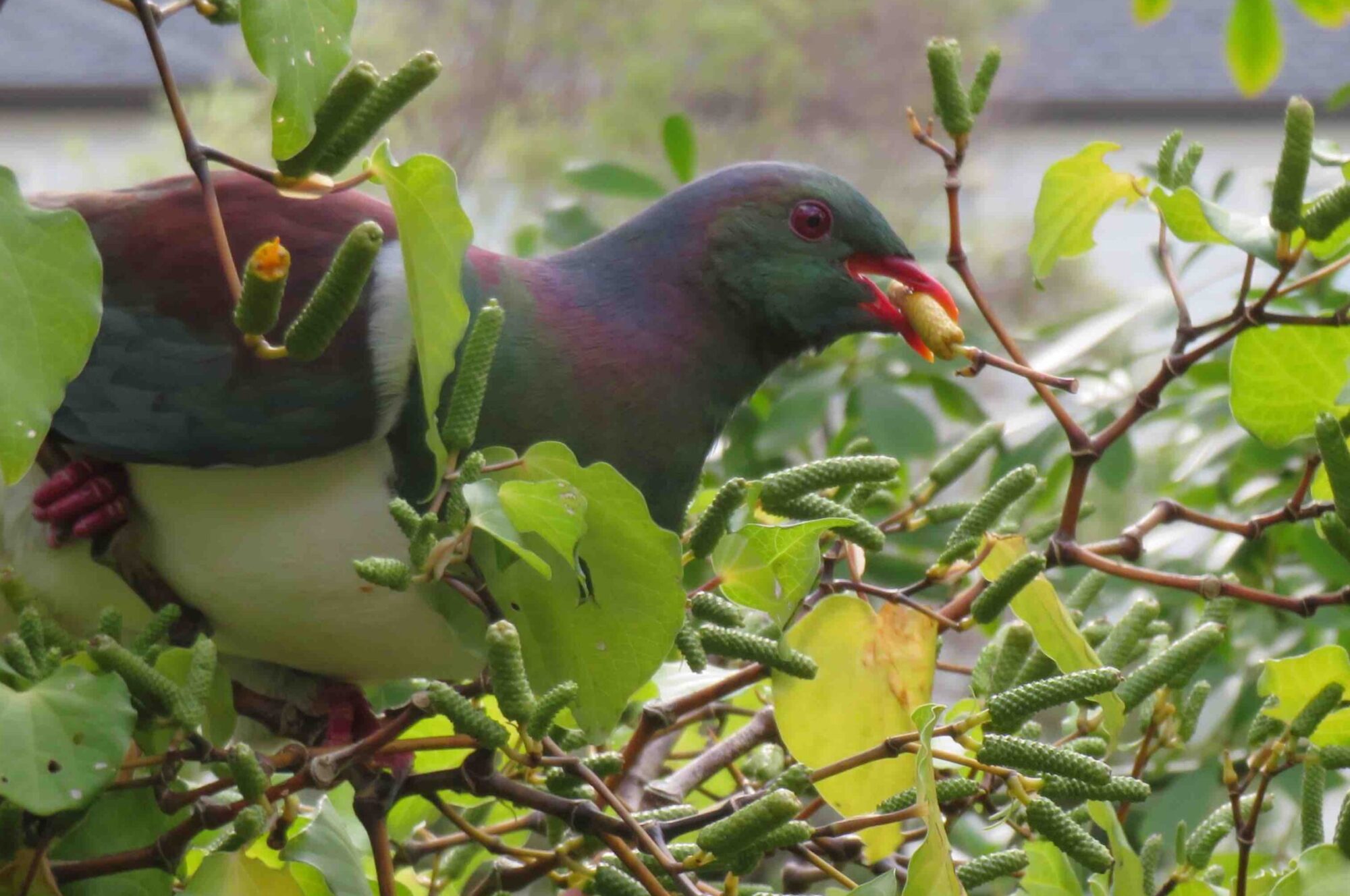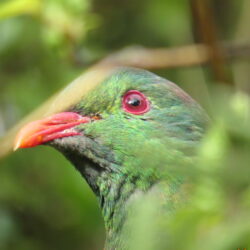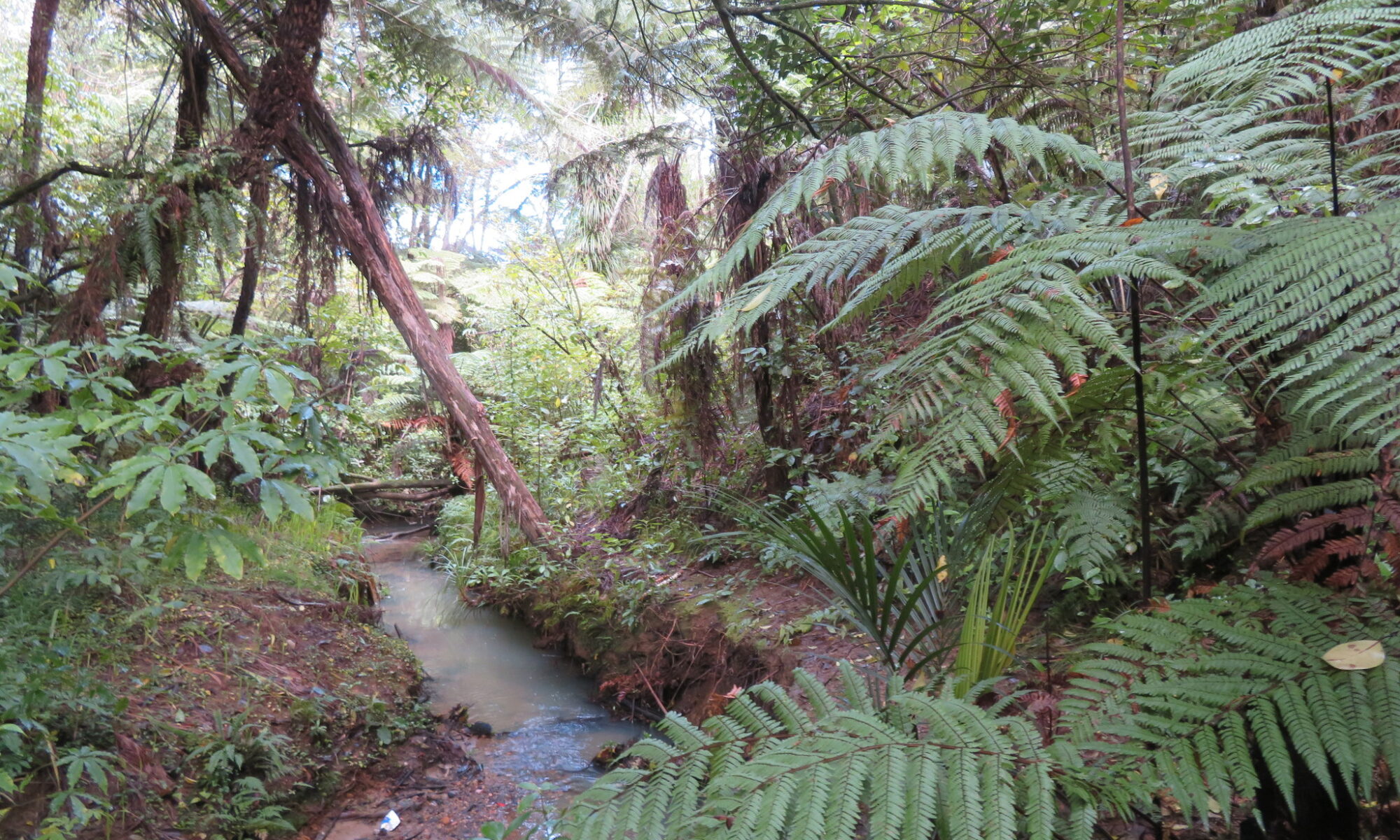Above: the stream alongside which Kaipatiki Rd was built (Glenfield)
In assessing a site for weeding, pathmaking, or other changes, we firstly consider the nature of the site.
North Shore Auckland has 10,000km of streams, most of them winding through narrow clefts to meet up with larger streams, many of them “intermittent”, ie flowing only in rainy seasons. Many of them have been altered by human construction, by concrete culverts, piping, or diversion.
They none the less remain streams, and many of us live in the adjoining stream gullies, with the stormwater falling on and around our homes and streets drained into the stream at some lower point hidden from view.
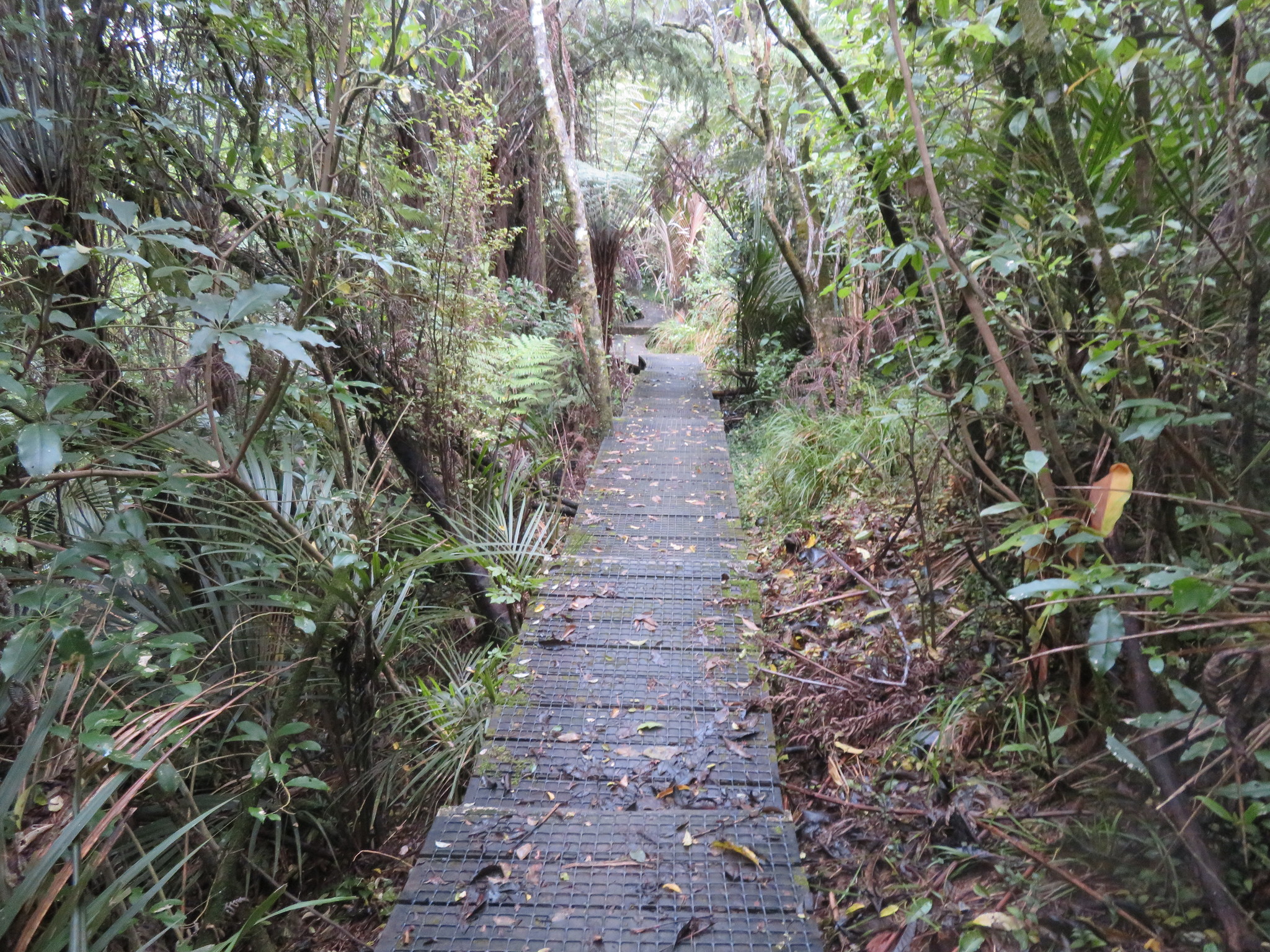
When assessing sites, we consider the effects of the differences between the present vegetation and ground conditions and the typical wild vegetation which evolved alongside this topology and would once have clothed it.

(Above: At the top of an almost vertical bank above the stream just upstream of the tidal zone, an old kaihua (“NZ jasmine”) vine ascends into the canopy from thick coils the base of a tanekaha. The area in the foreground is part of the 1.5km of this streambank weeded of kikuyu, privets, ginger and Tradescantia by volunteers from 1997-2002)
As discussed in more detail in other pages, we assess the hydration of various areas by the types of vegetation, the soil type and present observable soil moisture, any areas of seepage or erosion, and any signs of plant weakness or disease which may be attributable to too-much or too-little water.
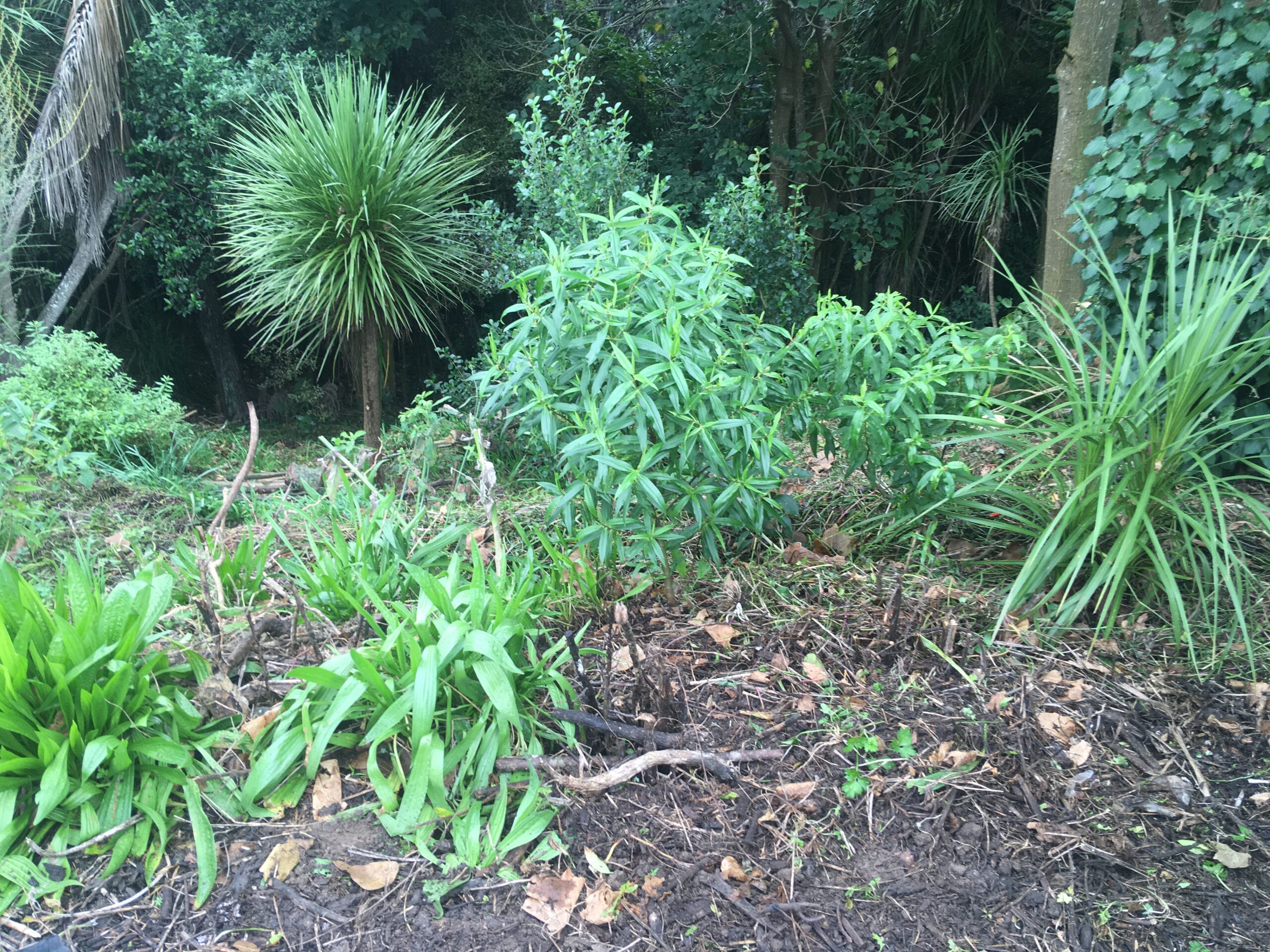
Left: In 1999, The roadside bank of Kaipatiki Stream beside Kaipatiki Rd in Glenfield, after weeding by volunteers, followed by replacement of eroded soil below a stormwater pipe outlet with loose fill by roading contractors.
Without planting and weeding, this loose soil would once again be washed into the stream , silting up the estuary and Upper Harbour beyond.
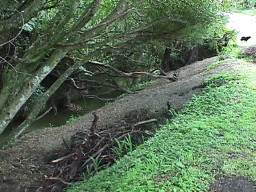
The observations of landmanagers and residents, are of course invaluable in determining where water is, or has been, an issue for better or for worse.
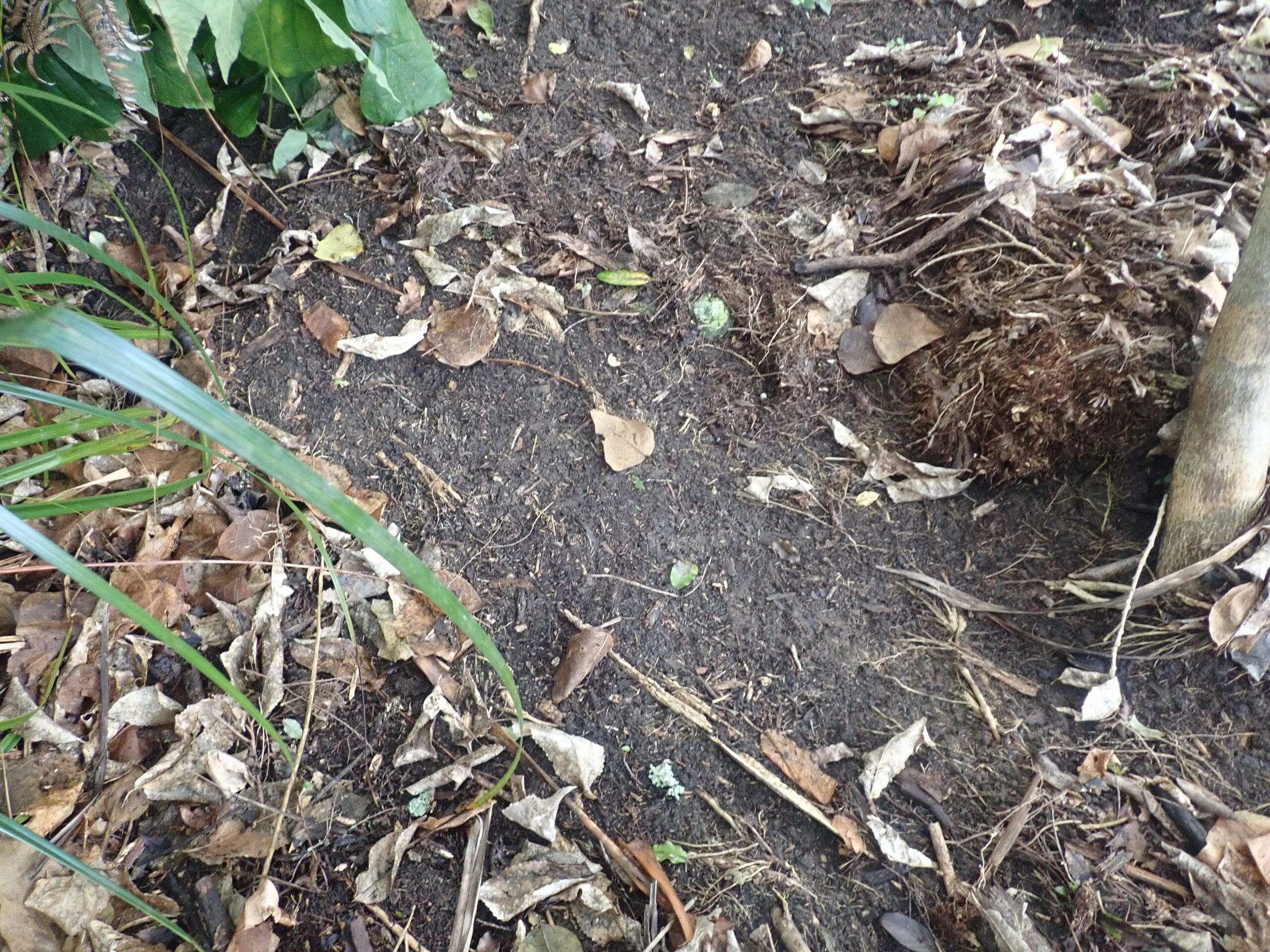
Mechanical compacting of a surface at the roadside above appears to have been the cause of this new run off channel down the steep bank below. Throughout the length of this new waterflow, young trees and ferns have been washed away, some small trees have been partially uprooted, and roots have been exposed on some of the large trees.
We note the amount and direction of light and shade, views needing to be maintained or obscured, sloping areas, any obvious signs of instability, and areas of bare clay at risk of compaction when wet by feet or heavy machinery.
Right: Soil compaction
Walking on wet clay compresses it, forcing out air and preventing most plant roots from growing through it for many years.
(Kaipatiki Creek bank during road construction and stream restoration project, 1999)
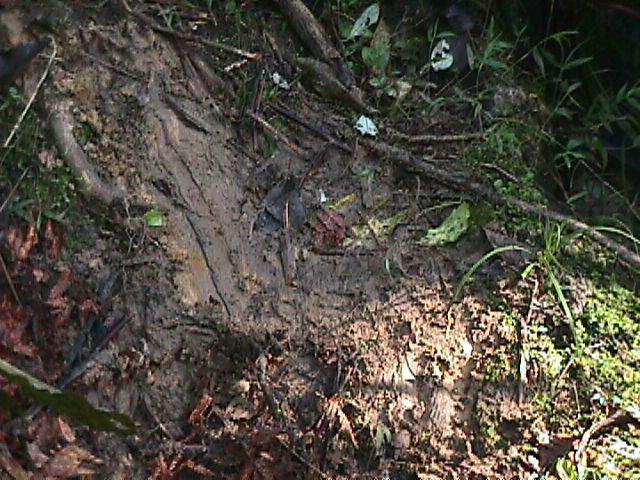
We check for challenges to weed control such as weed mat, sometimes old and hidden by weeds and covered by new soil, and often ruptured by the toughest of weeds, the ones that over years will even break through concrete. Where the weed mat is intact and the soil beneath is inaccessible, we often see around the edges the ongoing or future weed infestations, from the roots and runners lying just beneath the weed mat.
Sometimes we see the impact of synthetic materials such as weed mat on the surrounding vegetation.
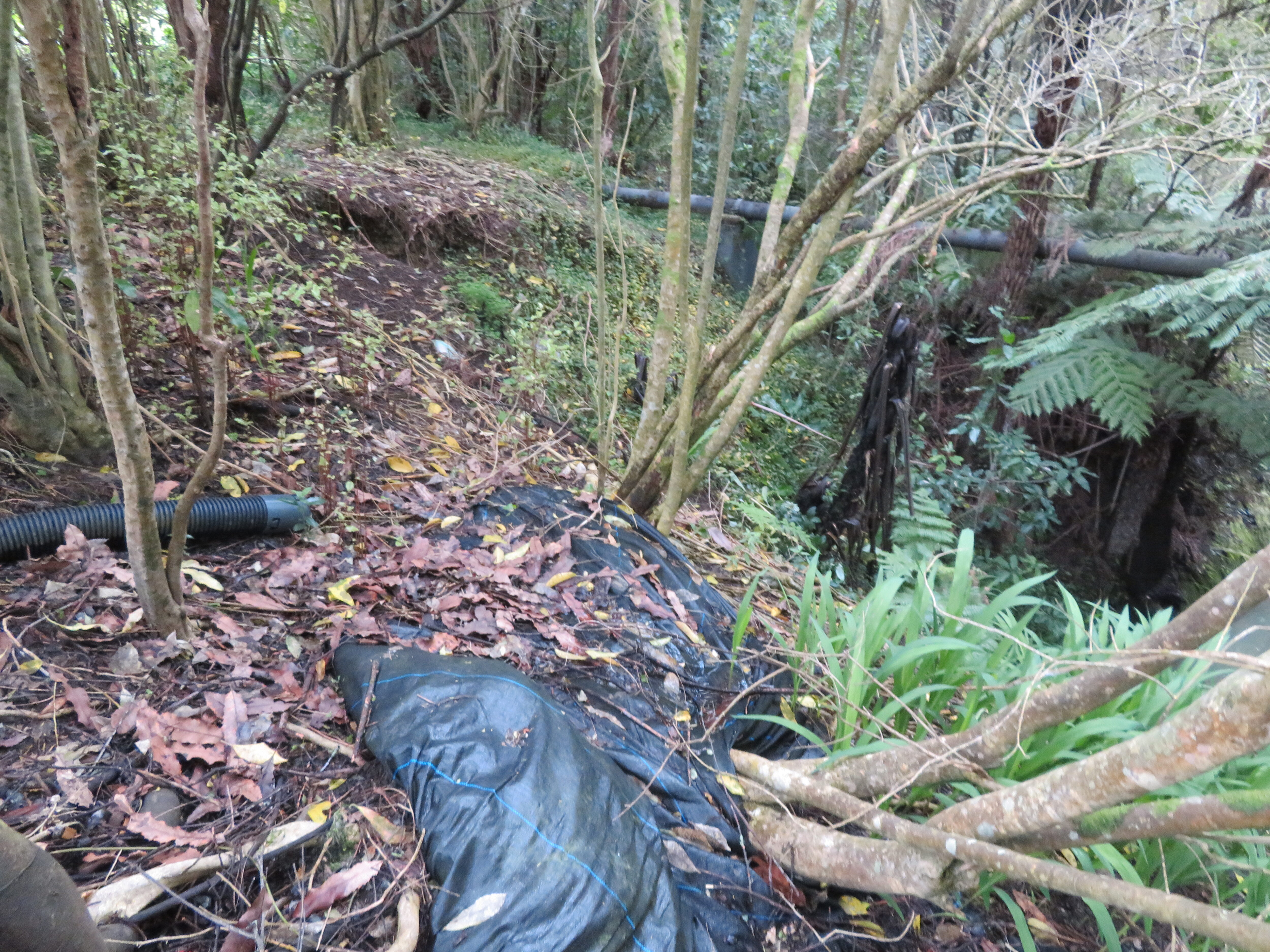
Left: Synthetic refuse, weed mat or weed bags:
These large mesh bags cover a large area, and years later there are no trees growing in the area they cover.
Then to the assessment of the existing plant community, and the type and speed of transition possible through selective weeding.
Below: This native forest ridgetop margin has been smothered by a honeysuckle infestation covering about 20 metres by 100m (and areas beyond). Kikuyu is controlled by mowing the large area of roadside recreational reserve along the top of the ridge, but the slope is too steep to mow here, and the grass is densely tangled with honeysuckle and blackberry.

After 4 years of selective weeding, the few weeds allowed to remain are unable to dominate this plant community, due to the ground cover and shade created by weed-free forest behind, supported by dense native regeneration to the top of the bank.
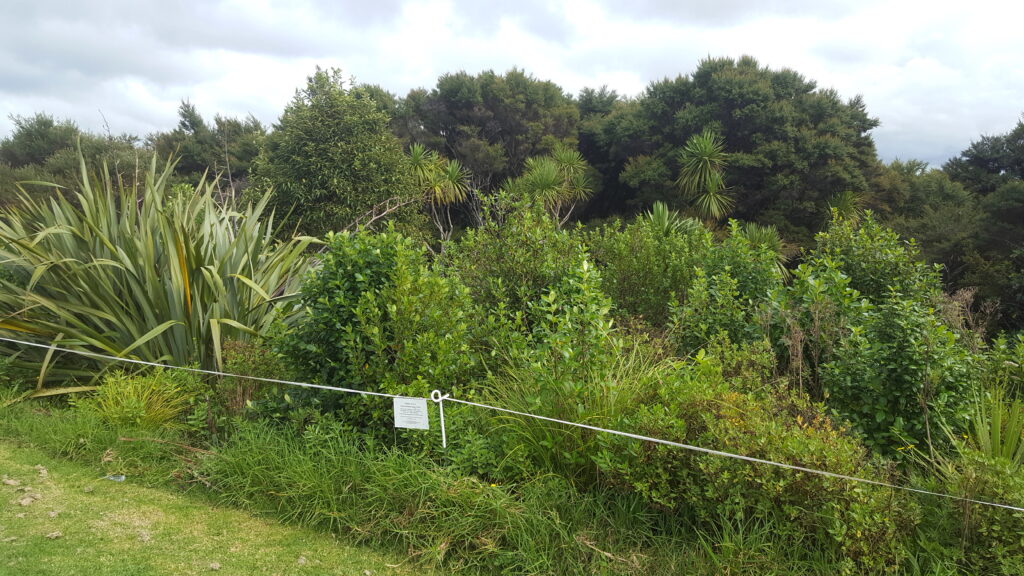
We look for the unrecognised wild plants, from seedlings to trees, that may provide the basis of a self-balancing, ie low-maintenance, plant community of an appropriate height and density for the landowner’s purposes.
The ideal plant community for low-maintenance mirrors the diversity and character of natural habitats nearby, within practical height limits for the situation.
Large old trees, including dead wood, provide soil stability, protection for younger lvegetation, and homes for native fauna.
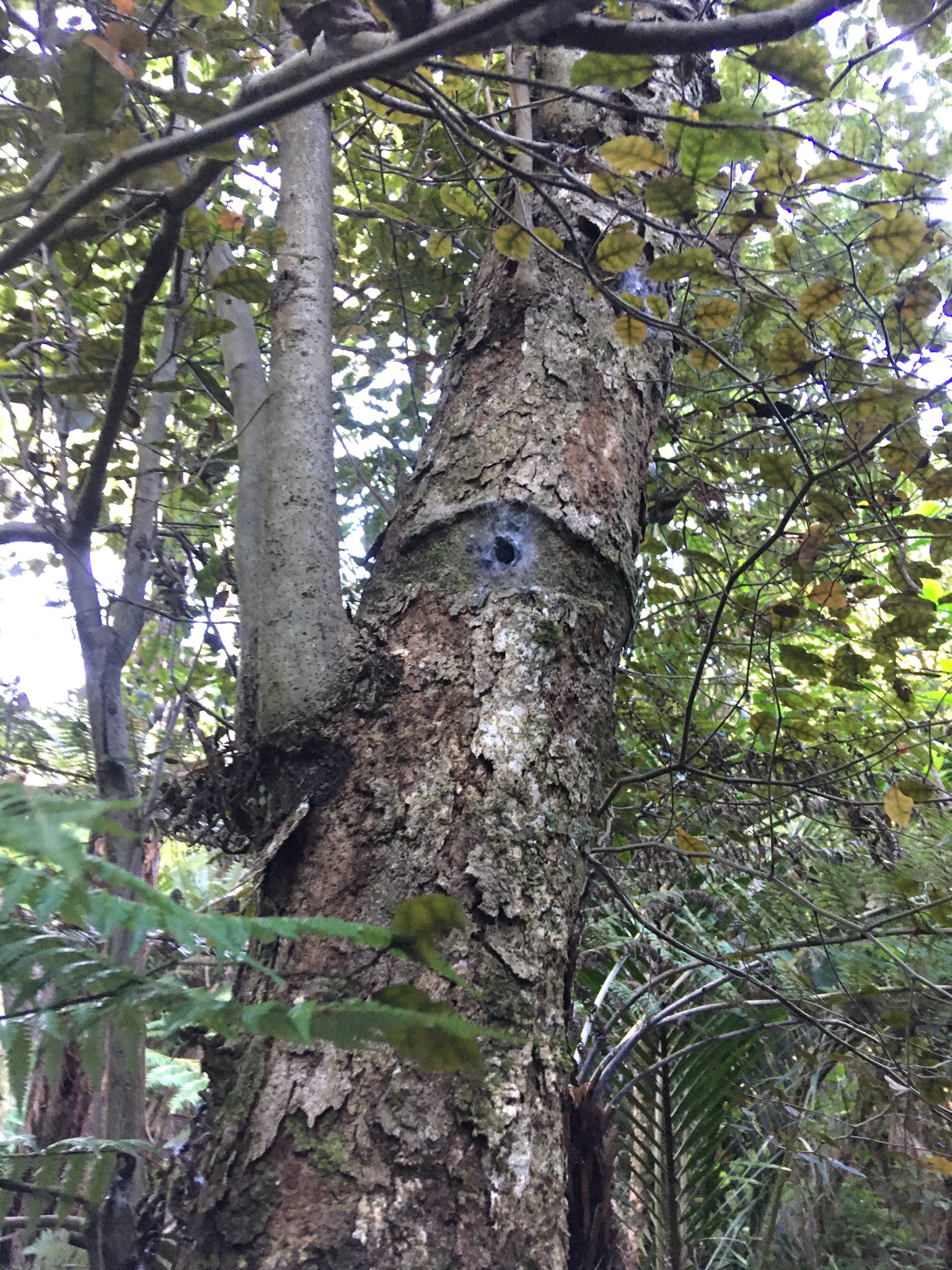
An old putaputaweta losing branches from its canopy has none the less put out strong replacement branches nearer the ground, while continuing to house the larvae (caterpillars) of the native puriri moth. Each puriri moth larva spends several years in one of these holes, coming out periodically to enlarge the hole as it grows, before pupating then emerging as a beautiful green hand-sized moth.
Examples of such plant communities can be found in the remaining North Shore forest, streams and wetlands maintained as natural reserves and kept free of weeds so that their natural character and species diversity remain intact.
The Gahnia Grove native plant community (below), in poor soil and full sun on an exposed ridge beside a busy road, is the result of selective handweeding and some transplanting of wild seedlings.
Mostly karamu and Shrubby toatoa (Haloragis erecta), it includes wild native grasses Basket grass (Oplismenus hirtellus) and Weeping grass (Microlaena stipoides); the creeping native groundcover Nahui (Alternanthera nahui), and the natives Dark nightshade and American nightshade (Solanum opacum and americanum).
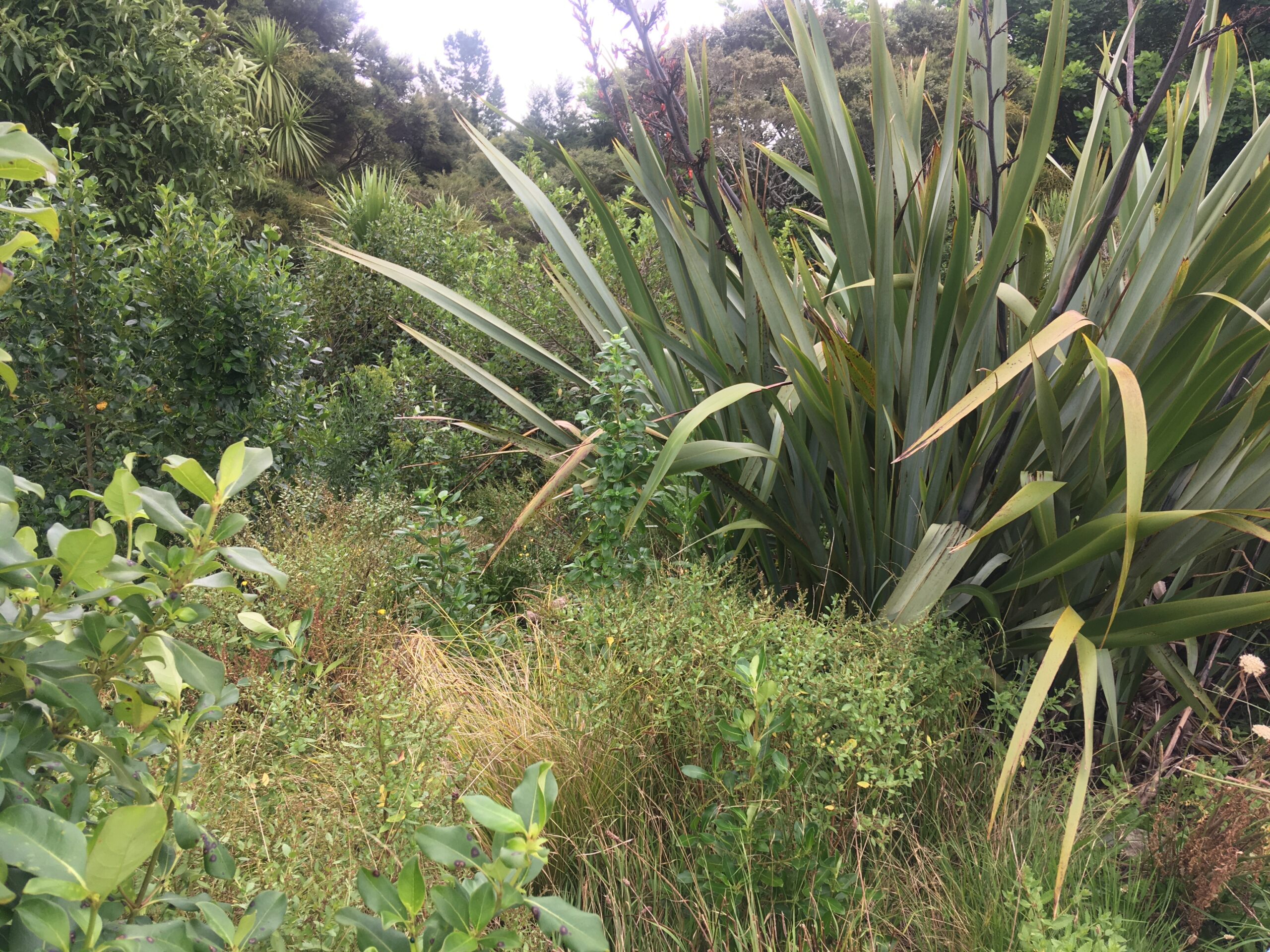
However, when looking at the vegetation in a park or reserve, remember that, in many reserves as in gardens, the beauty and integrity of the plant community formed naturally by native vegetation has been lost or broken, replaced by exotic plants spread from gardens by birds, by water, on the wind, or disposed of as garden waste.
Once the basis of a potential plant community is identified, whether planted or wild, the objective is to promote the development of those desirable plants, protecting them with supportive plant “neighbours” until the natives fill the area, squeezing or shading out most of the weeds by their presence.
Karamu can grow a metre a year in the rich loose soil created by the use of the surrounding weeds and any dead wood as mulch, which soon becomes compost.

Then to the identification and assessment of the current weeds, in order to control and/or eradicate them as needed, in the most productive and cost-efficient manner.
Each weed is itself competing with the other weeds in the patch, and some of the existing weeds may become more difficult to control if removal of others allows them to dominate.
Low leafy weeds, including grasses, provide ground cover which prevents erosion, preserves soil moisture, and prevents most new weeds from seeding.
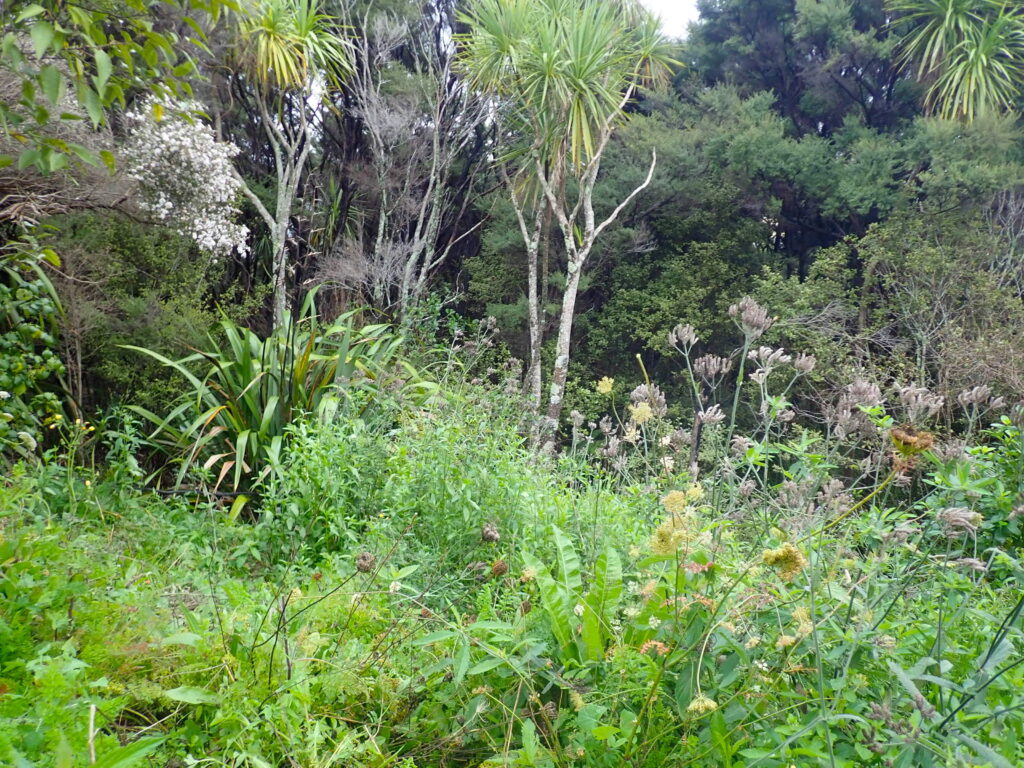
This spontaneous wild revegetation after removal of masses of environmental weeds was mostly non-native low leafy plants, which were selectively weeded to retain only these easily controlled species, including wild carrot, wild Verbena, sowthistle, plantain and Oxtongue.
New invasions are to be expected after mass weed clearance, as the opportunity is seized by weeds which have not established in this spot before due to the present dense weed cover.
Shrub and small tree weeds provide shade and shelter for the ground beneath and, depending on their distance from one another, may shade an entire area at certain times of the day and year.
Like all plants, shrub and tree weeds draw water from the soil, filtering out sediment and chemical contaminants before any remaining water continues its downhill course or seeps into any drier surrounding soil.
Observing how each part of a site is affected by the current shrub and small tree cover helps avoid creating dry, boggy or windswept areas.
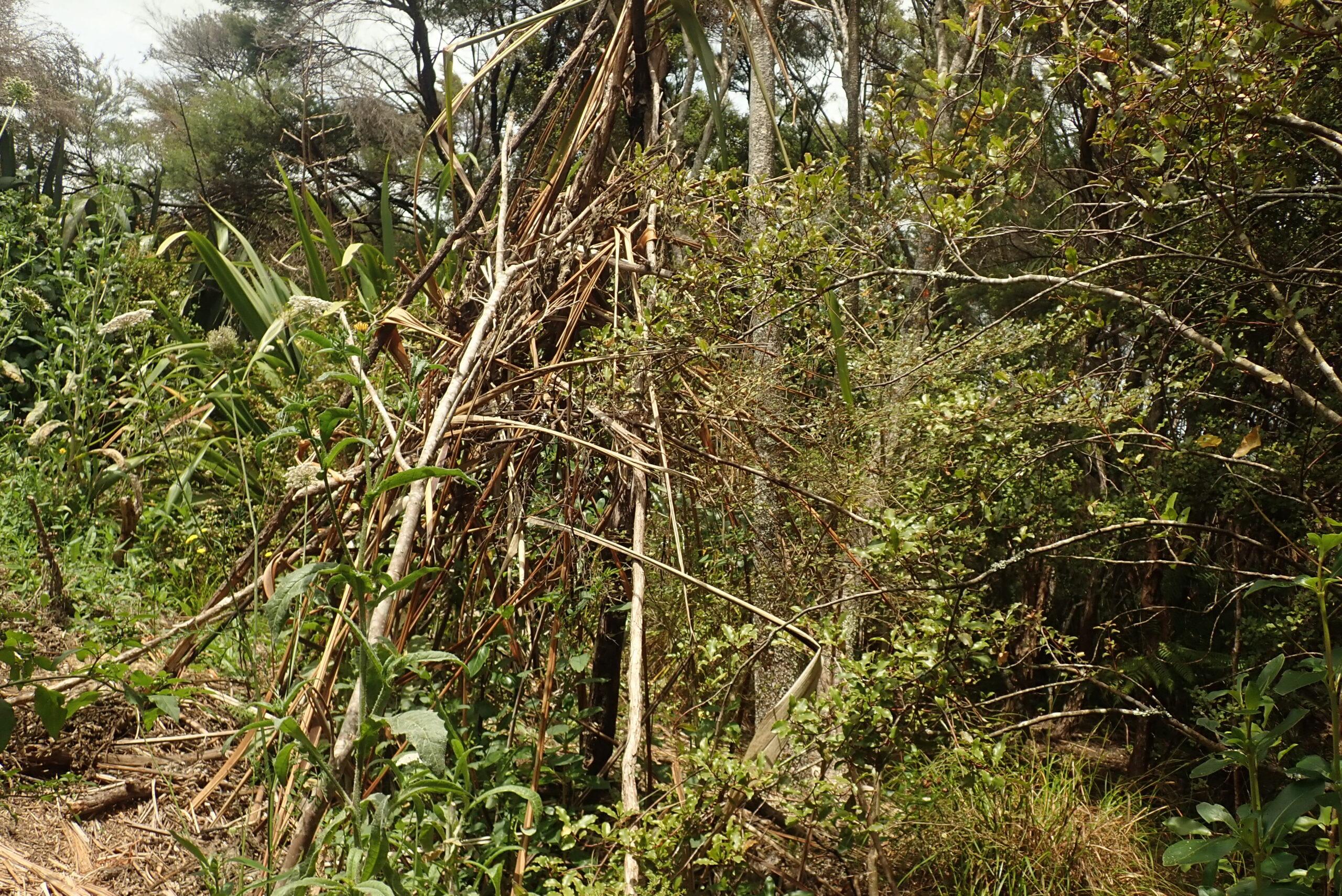
This rough shade fence was erected to shade two young putputaweta through summer drought, as the trees were suffering badly from the loss of shade and shelter provided by dense invasive weeds (Japanese honeysuckle, blackberry and kikuyu), before their removal.
Weeds as wildlife habitat
Weeds are a little bit of wild growth, often providing shelter or food sources for insects, lizards, birds and other wee critters, whether native, or valued introduced species such as honeybees, bumblebees, and other pollinators.
South African praying mantises seem to have largely replaced the native species as aphid-eaters in local vegetable-gardens.
Other introduced, ie non-native, insects are less helpful, or even a threat to food production or native vegetation.
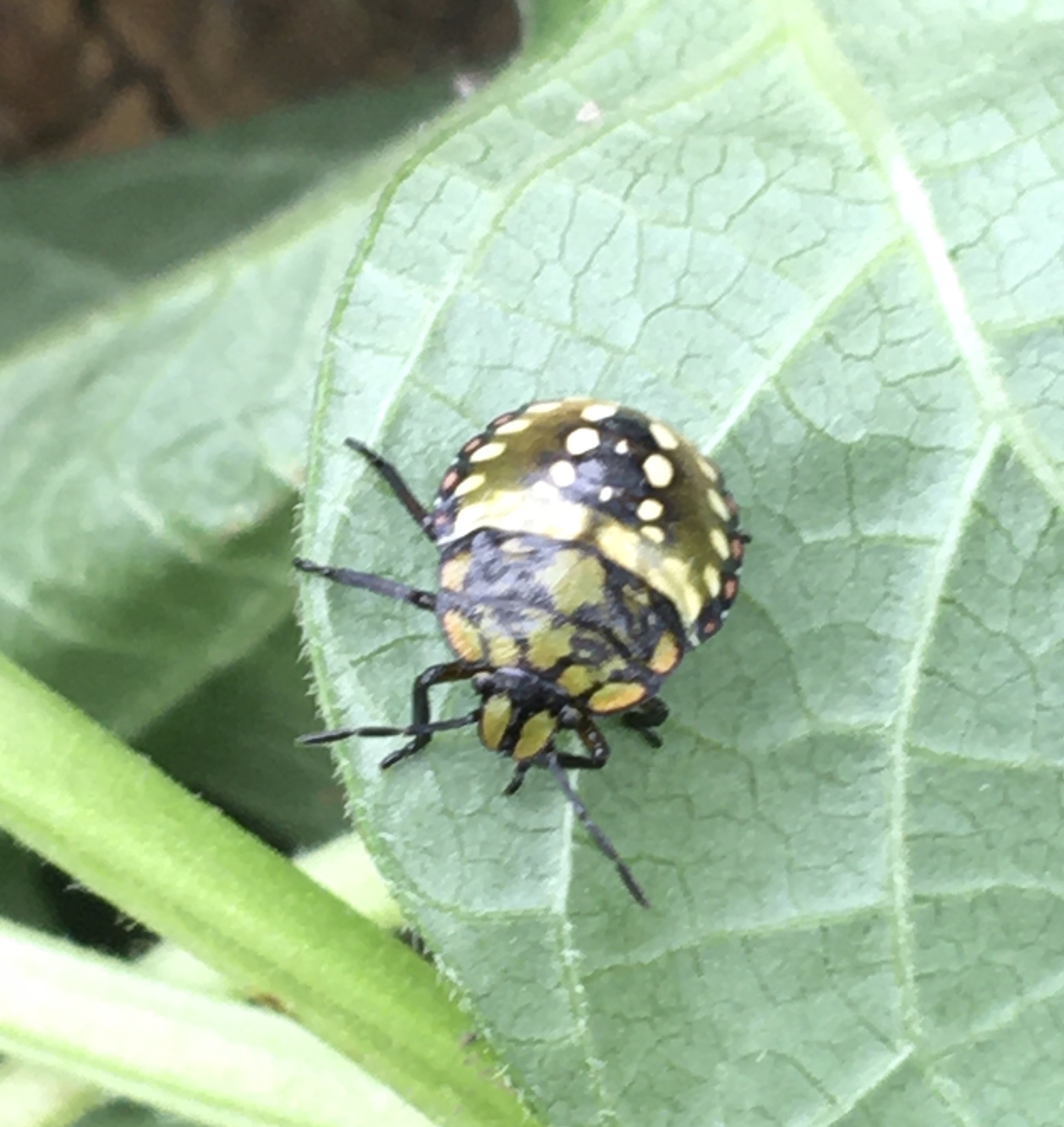
Invasive Green vegetable bug…similar to a native vegetable bug, but whereas the a related native species feeds mainly on native plants, without causing serious damage, this one feeds in our vegetable gardens…and tastes dreadful!
This 22-spotted Hadda beetle, or potato bug, is new to NZ, and so far observed mostly in Auckland. As well as potatoes, tomatoes and peppers, it has been observed munching through most of the leaves of native Nightshades, like this one on the North Shore.
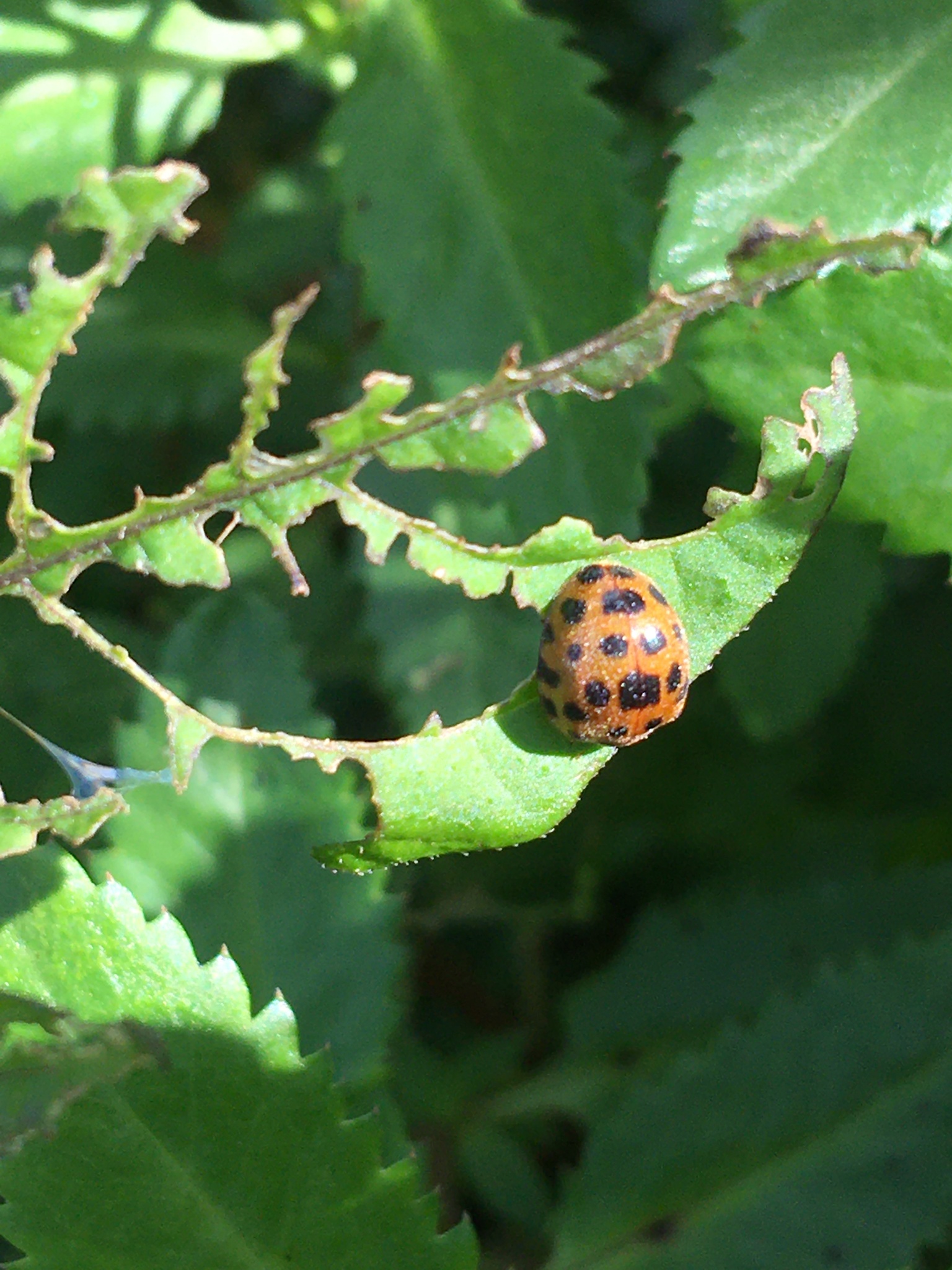
Other introduced creatures on which vegetable gardens may now depend include the newly introduced and extremely numerous Rainbow skink, which, fast and fearless, has almost completely replaced the native copper skinks. We observed a Rainbow skink dragging an introduced Australian cockroach almost as large as itself along a Chatswood roadside pavement. Its impact on native flora and fauna is not yet known, (are they a food source for the native ruru/morepork?) but we hope at least that the rainbow skink feeds on the slugs that eat our vegetables.
Assessing what your weeds are currently doing for their immediate environment allows us to plan the successful transformation of a dysfunctional plant community to a healthy and cohesive one that will not require a lot of ongoing maintenance.
